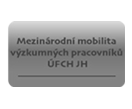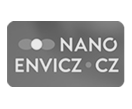Graphene-Induced Energy Transfer Spectroscopy of tethered lipid bilayers
The development of super-resolution fluorescence microscopy has revolutionized our capability to resolve structures on the nanometer length scale with high specificity and minimal invasiveness. One of these new methods is recently developed Graphene Induced Energy Transfer (GIET) enhancing the axial resolution even to sub-nanometer scale, which enables for resolving individual leaflets of a supported lipid bilayer. This method is thus completely unique and, in combination with Fluorescence Lifetime Correlation Spectroscopy (FLCS), it hides the potential to selectively monitor dynamic processes in each bilayer leaflet separately. However, this potential has not yet been exploited due to the lack of suitable surfaces. This project aims to 1) develop a framework for the preparation of free lipid bilayers whose properties and dynamics will not be affected by the interfering properties of graphene supports and 2) to combine GIET and FLCS methods into a new robust technique capable of monitoring diffusion, co-diffusion and interaction of membrane components between individual leaflets.
Mgr. Sýkora Jan Ph.D.
 jh-inst.cas.cz
jh-inst.cas.cz

















